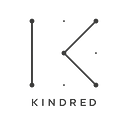The Venture Capital Selection Process — the Numbers.
We often hear that it’s hard to raise funding for a seed business (or any stage business, in reality). But how difficult is it exactly? We thought it would be useful to share the Kindred investment process and the numbers at each stage.
Like any VC, we get far too many inbound approaches to see all of them. We get sent decks to our website, by email and LinkedIn, plus via any number of intermediaries and specialist websites, who promise to make it easier for startups to contact VCs. We estimate it’s about 3,000 every year and while we try and keep on top of these, we’ll always give priority to one type of application — that’s a warm referral from someone we respect.
The warm referral concept is often mistaken for some kind of elitism — in other words, how do you get to meet someone who knows us if you’re not in the “magic circle”? In reality, we’re connected directly to upwards of 30,000 people and if you include all the Kindred portfolio founders (who all uniquely share the profits in the fundand are great at sending us qualified dealflow), the number of connections is incalculable.
It’s also worth noting that we have a very diverse partnership, in terms of age, gender and background and this is reflected in both the range of our networks and the types of founders we invest in. As an example, we’re three times more likely to invest in female CEOs than the average VC, so our network is much wider than you would expect of a traditional VC.
If a potential founder really can’t find someone to recommend them, it also begs the question if they’re really going to be able to build a huge business.
Of those 3,000 initial applications, around 500 or 600 per year have a first meeting with a Kindred partner. So you can see why it’s so important to stand out from the crowd to get to first base. If you really can’t find a way in via referral, at least think of a way to be memorable or different — at a minimum, by tailoring your approach to us in some way. Find an edge to get into the 20% we end up meeting.
Around 100 of these get to the second stage of our process, which is to meet another Kindred partner, after which we’ll have a discussion internally, along with a vigorous debate about taking things further.
The next step is to meet the final two Kindred partners (hopefully in the same meeting to be respectful of the entrepreneur’s time). About 40 companies get through to that meeting.
Our final stage (apart from due diligence) is to have a Working Session between our team and the startup’s. This is a concept we have developed at Kindred and, as far as we know, is unique to us. The idea in this final meeting is to spend ninety minutes having a discussion around a couple of aspects of their business that the founders are thinking about and that they’d like some input on. It’s an opportunity for all of us to see how well we work together, if the chemistry is right and above all, if we would make a good team for the next 10 years, or so. We meet around 20 companies for this stage and the feedback we get from these final sessions is always extremely positive.
Of those 20, we finalise an investment in around 10 companies per year.
As a side note, the companies who make the last 20, but not a term sheet, are the hardest ones to break the bad news to. We really have come close to investing at that point, but for some reason, couldn’t quite get there. At the same time, we are very conscious that time is the entrepreneur’s greatest asset, so we really do try not to waste any of it during our process.
However, the stark fact remains that we have gone from 3,000 hopefuls to actually investing in 10 of them. I think you’ll find most VCs have similar investment ratios, so getting VC funding is very hard.
Of course, that shouldn’t put great entrepreneurs off and there are many other sources of funding available, if VC isn’t right for you. However, bear in mind that the European industry average for raising Series A after seed funding is only 19%, or 40% if your funding comes from an upper quartile VC, so this is just the beginning of a series of highly contested funding rounds.
At Kindred, I’m delighted to share with you that 73%* of our portfolio go on to raise Series A, so we seem to be able to give our founders a real edge on the next stage of their entrepreneurial journey.
*Based on an investment period of 24+ months
